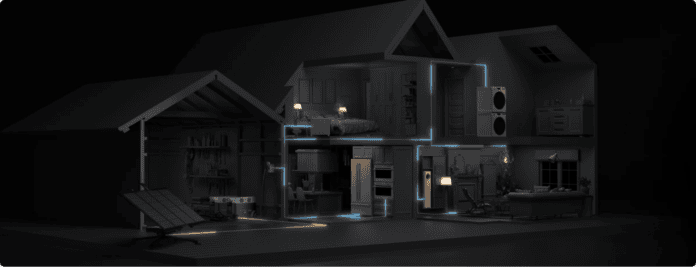Table of Contents
The national power grid in South Africa still needs to be upgraded to keep pace with growing electrical demands. Eskom, South Africa’s primary electricity supplier, is a state-owned company accountable for generating, transmitting, and distributing electrical power nationwide.
Eskom carries out load shedding and reduction measures to manage electricity demand and prevent grid collapse. These measures are similar but serve different purposes. Understanding these differences helps consumers prepare for and navigate power disruptions.
Keep reading to learn what these terms mean, the common causes for both, and the fundamental differences between them.
What Is Load Shedding?
Eskom implements load shedding when the national power grid cannot meet the electrical demands. It’s a deliberate and systematic shutdown to prevent the ageing national power grid from collapsing. The outdated, ageing grid infrastructure in South Africa can’t keep up with electrical demands during peak hours without experiencing extreme strain.
However, this measure critically impacts small businesses, community health centres, households, and the country’s economy.
What Are the Most Common Causes of Load Shedding?
High Electricity Demand
Summer heatwaves and cold winters lead to spikes in electricity demand during peak hours. Due to these high grid demands, shedding is implemented to prevent a blackout.
Fuel Supply Issues
Coal is the primary fuel source in South Africa. Disruptions to coal supply, such as mining strikes and transport issues, limit fuel for power stations.
Power Station Damages
Damage from extreme weather, technical failures, or ageing structures requires repairs and limits the available electricity for consumers.
Insufficient Power Generation Capacity
South Africa’s power generation infrastructure cannot meet the increasing demand. Ageing power stations, a lack of funding for new power station construction, and little investment in renewable energy have contributed to insufficient generation capacity.
Stages of Load Shedding
Eskom carries out load shedding in stages, each corresponding to a higher level of demand reduction. It allows the electricity outage to match the severity of the shortage and minimises disruption by distributing power cuts across different regions and times.
Stage 1
In this stage, the electricity consumption must be reduced by 1,000 MW. During this stage, regions will experience three four-hour outages over eight days or three two-hour periods over four days.
To keep your essential devices running during these short outages, consider the EcoFlow RIVER Pro Portable Power Station. This portable power station offers a 720Wh capacity and 600W output, making it ideal for powering small appliances, lights, and electronics. With its X-Boost technology, it can support devices up to 1800W, ensuring compatibility with a wide range of home and office equipment.
The EcoFlow RIVER Pro also features fast charging capabilities, reaching 80% in just 1 hour via AC input, and can be recharged using solar panels for sustainable energy solutions. Its compact design and portability make it a perfect choice for households and small businesses looking to stay powered during Stage 1 load-shedding.

Stage 2-8
These stages are more severe, affecting more communities for greater periods. Higher load-shedding stages indicate a more significant imbalance between electricity supply and demand.
Stage 2 is commonly declared when an unexpected power station breakdown occurs. At this stage, 2,000MW must be shed, and areas can expect power cuts twice daily, lasting two to three hours.
Stage 8 is a last resort, and 8,000MW must be shed. Power cuts last up to four hours, twelve times a day, over most of the country.
What Is Load Reduction?
Load reduction explicitly targets areas with high levels of electricity theft, which disproportionately strains the electrical grid. During load reduction, entire neighbourhoods may experience a power outage without prior notice.
What Are the Most Common Causes of Load Reduction?
Electricity Theft
Illegal connections to the power grid lead to unmetered consumption, straining the infrastructure. Load reduction prevents overloaded transformers and damaged equipment.
Unpaid Electricity Bills
Due to financial restraints, Eskom cannot continue supplying electricity to areas with high non-payment rates. Reducing the electricity supply in these areas will allow Eskom to manage its economic losses.
Infrastructure Maintenance
Ageing and poorly managed infrastructure in specific areas is more prone to failure. Load reduction alleviates pressure, allowing for maintenance and repairs.
High Peak Demand
During peak hours, electricity demand spikes. Reduction prevents overloading of the electrical grid, which damages transformers and cables. During these peak hours,the EcoFlow RIVER Pro Solar Generator (PV110W) offers a 720Wh capacity and 600W output, making it an ideal solution for powering essential devices during high-demand periods.
With the included 110W solar panel, you can recharge the unit even during power outages, ensuring continuous power supply for your home or office. This portable power station is perfect for households and small businesses looking to stay powered during peak demand periods.

Key Differences Between Load Shedding and Load Reductions
Impact
Load reduction only impacts areas with high usage, usually specific neighbourhoods, whereas load shedding is nationwide.
Communication
A structured and formal announcement is generally given for load shedding. Load reduction can occur unexpectedly.
Style
There are stages of load shedding that match the severity of the power shortfall. A load shed is unannounced and targets trouble spots in real-time.
Purpose
Load reduction combats localised issues like unpaid bills and illegal connections. Load shed has a broader impact, serving as a nationwide power-saving strategy.
Final Thoughts
Load shedding is the systematic process of cutting power over various sectors in short increments to save power nationwide, with a prior announcement. Load reduction is often a sudden, unannounced, purposeful outage targeting high-usage areas, allowing issues to be addressed immediately. Both strategies are essential for Eskom to maintain grid stability in South Africa.
Knowing these distinctions can help you better prepare and respond to power outages. For reliable backup power solutions, turn to EcoFlow Solar Generators. You’ll have a limitless power supply with an extensive range of solar panels paired with power stations.
